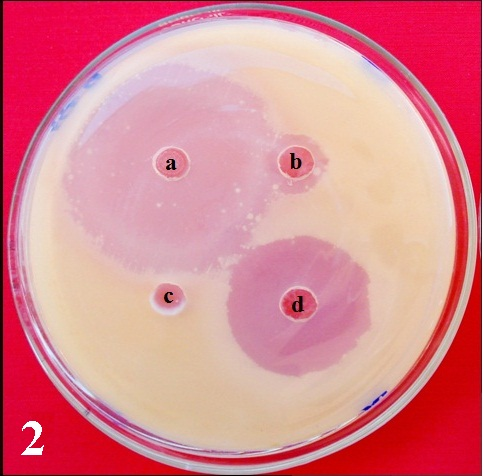P-ISSN: 2394-0530, E-ISSN: 2320-3862
2014, Vol. 2, Issue 4, Part B
Evaluation of endophytic fungi from Butea monosperma for antimicrobial and enzyme activity
Darshan S. Tuppad and S. Shishupala
Endophytic fungi are likely to produce novel bioactive compounds and enzymes. Bioprospecting of endophytic fungi from medicinal plants is gaining significance. A total of 73 endophytic fungal isolates from medicinal plant Butea monosperma were evaluated for their antimicrobial property and enzyme producing potential. Eleven endophytic fungal isolates were found to secrete antifungal compounds inhibiting conidial germination of plant pathogenic fungi. Differences were observed among the endophytic fungal isolates in their antifungal activity. Two isolates of Morphotype-1 (BM 8 and BM 56) showed distinct antifungal activity in conidial germination inhibition assay. Isolates of Fusarium spp., Colletotrichum sp. and Sclerotium sp. were also effective against many target fungi. Three isolates of endophytic fungi showed antifungal activity against human pathogenic fungi. Five isolates of endophytic fungi were found to be antibacterial against Gram positive bacteria in agar well diffusion assay. The isolate of Aspergillus fumigatus (BM 6) showed antibacterial activity against both Gram positive and Gram negative bacteria. Ability of endophytic fungal isolates to produce amylase, cellulase and pectinase was assessed in plate assay. Highest amount of all the enzymes were found to be produced by Cladosporium sp. as indicated by enzyme index. A range of enzyme activity was shown by isolates of Fusarium verticillioides, Colletotrichum sp., Sclerotium sp., Pithomyces chartarum, Curvularia lunata, Morphotype-1, Morphotype-2 and Morphotype-3. Considerable variations in enzyme producing ability are indicated clearly by the isolates. Promising endophytic fungal isolates of B. monosperma producing both antimicrobial compounds and enzymes were identified. Potential isolates may be exploited biotechnologically.

Fig.: Effect of culture filtrates of endophytic fungi from Butea monosperma on growth of Cryptococcus neoformans. a- 10 µg of fluconazole, b- Culture filtrate of Morphotype-1 (BM 56), c- Culture filtrate of Aspergillus fumigatus (BM 6), d- Culture filtrate of Fusarium solani (BM 2).
Pages : 38-45 | 1905 Views | 142 Downloads

How to cite this article:
Darshan S. Tuppad, S. Shishupala. Evaluation of endophytic fungi from Butea monosperma for antimicrobial and enzyme activity. J Med Plants Stud 2014;2(4):38-45.
Related Journal Subscription
Important Publications Links






